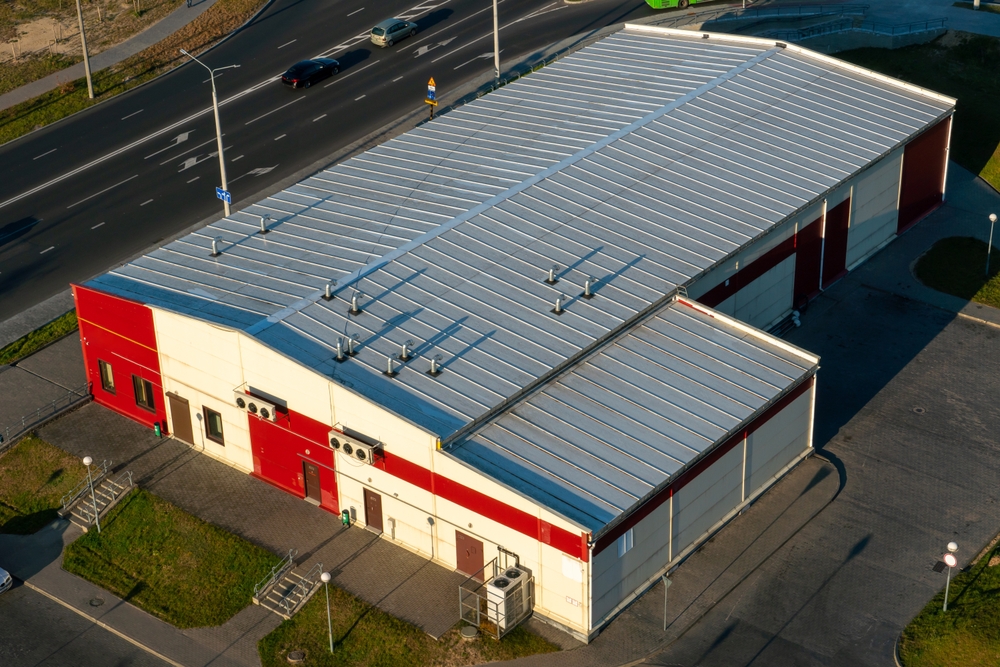Ventilation is an important concept in many areas of our lives and personal property, and one great example here is your roof. Ventilation is important for any roof setup, and metal roofs on various buildings and structures are no exception.
At Mid Michigan Metal Sales, we offer an unmatched selection of metal roofing panels, metal roofing shingles and other metal roofing products for clients around Michigan. Here’s a primer on why ventilation is so important for metal roofs, how it works, and some of the basic options for metal roof ventilation that you should consider.
Metal Roofs and Condensation
One of the key reasons why ventilation is so important for metal roofs is related to condensation. Metal roofing panels, without proper ventilation, can experience a buildup of moisture on their undersides that eventually becomes trapped between the panel and the roof deck. When this happens, there’s a serious risk of damage not just to the roofing structure itself but also to insulation, ceiling materials and walls — all things that you want to keep dry and safe.
This is where proper metal roof ventilation comes into play. By ensuring that there is air flow throughout the roofing system, you can prevent condensation from gathering and causing problems. This is why a properly ventilated space beneath the roof deck is so critical to maintaining your metal roof’s integrity.
Ventilation Vs. Insulation
When it comes to protecting your roof from condensation and related problems, ventilation and insulation are two key players. While insulation is important for keeping heat in and cold out (or vice versa), it won’t necessarily stop condensation from forming on your metal roof. In fact, some types of insulation can create a barrier that actually traps moisture against the underside of the roofing panel.
That’s why you need to have proper ventilation set up to ensure that any moisture that does form can quickly be removed before it has a chance to do damage. Ventilation works in conjunction with insulation, rather than as a replacement for it.
Goal of Metal Roof Ventilation
As we touched on above, the main goal of ventilation for metal roofs is to remove moisture away from the roof deck and prevent condensation from forming. But there are also other benefits that come with proper ventilation, such as preventing extreme temperature fluctuations, which can affect the performance and lifespan of your metal roofing panels.
Ventilation also allows air to circulate and properly dry out any areas that may have gotten damp due to leaks or other issues, and can also help reduce unwanted odors caused by mold and mildew growth. In short, ventilation is an essential part of maintaining a healthy and long-lasting metal roof.
Ridge Vents
The most common form of low-profile metal roof ventilation is ridge vents, which are installed at the peak of the roof and allow air to enter and exit through a narrow gap. These are very effective for allowing warm, moist air to leave the attic or space beneath your roof deck without interfering with insulation installation.
This material is placed on metal roofing panels, then covered with a ridge cap flashing. Most ridge vents are 10 feet long, though some companies offer longer options.
Gable Vents
Often used at the peak of home gables, and available in both intake and exhaust formats, gable vents are another option for metal roofing ventilation. They can also be used in tandem with roof louvers to provide a dual-purpose exhaust/intake system that helps keep air flowing smoothly.
Gable vents will typically be placed right near the top of the home on opposite sides — for instance, you may have one gable vent on the north side of your home and another on the south side. This allows cross ventilation to occur inside your attic or beneath your roof deck.
Intake Vents
For some metal roofs, the use of both soffit and drip edge vents may be used to allow for the intake of fresh air. This will help to prevent moisture from pooling near the eaves of your roof and can also reduce ice damming in colder climates.
By using a combination of both intake and exhaust vents, you can achieve maximum airflow through your metal roofing system, helping to maintain its overall performance and longevity.
Proper ventilation is absolutely essential for ensuring the long-term health and performance of your metal roof. By considering the various options available and choosing a system that makes sense for your particular structure or home, you can help keep your property safe, dry and well-protected from the elements.
So if you’re in need of new ventilation equipment to go along with your metal roofing installation, count on Mid Michigan Metal Sales to have everything you need. Visit us online today to learn more about our metal roofing products and how we can help you achieve the best possible results for any roof in Michigan.


